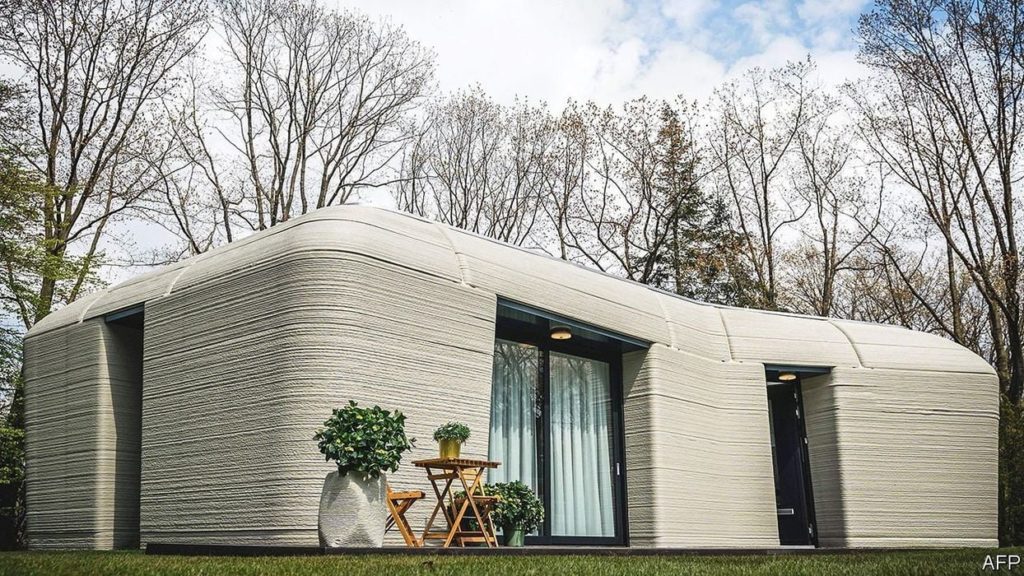
I was surprised to find a story about 3D printed housing in The Economist.
The Economist is a well-known publication that is respected worldwide for their views on business and economics. The magazine regularly publishes charts on economic activity, and analyzes what’s behind the numbers.
Often they feature items focusing on the future of business, sometimes related to a technological development.
That has now happened for 3D printed buildings with their recent story, “The Rise of 3D Printed Houses”.
The story itself does not contain any news Fabbaloo readers may not have already seen on our pages. It describes the activities of PERI, Mighty Buildings, ICON and others either commercially using construction 3D printing or performing important research on the topic.
I should point out, as I always do, that construction 3D printing refers only to the concrete portions of a building; all other elements, such as HVAC, plumbing, electrical, flooring, windows, finishing, etc., are done using conventional approaches. For some reason many media outlets describe this process as “3D printing houses”, when in fact only the walls, floor and foundation might be 3D printed.
The Economist story suggests that 3D printed housing may become mainstream at some point due to a number of factors. They say:
“If successful, building by 3d printing is likely to spread beyond housing. Opportunities also exist in warehousing, offices and other commercial buildings. And beyond earthly structures, nasa, America’s space agency, is exploring the use of 3d printing to build landing pads, accommodation and roads on Mars and the Moon.”
One aspect that continually appears in the story is the several ways construction 3D printing can positively affect the environment. For example, if a building is 3D printed on site, the amount of shipping of materials to the site is reduced significantly: “there is less need to move lots of heavy stuff about.”
There are also indications that in an increasing number of situations the cost to 3D print buildings could be less than conventional approaches, and this is good news.
Thermoplastic and metal 3D printing were very slow to start — they are literally forty-year-old technologies after all — and only now are gradually becoming widespread in industry.
The two reasons for the sluggish launch of that technology were the original lack of material choice, which has now been mostly resolved, and the cost and time to 3D print objects. The latter has not been resolved, and that is why thermoplastic and metal 3D print usage is mostly constrained to high-cost environments such as aerospace, healthcare and low-volume production runs.
All technologies follow a similar path, where they become gradually adopted by industry, and this is likely to be the case with construction 3D printing.
But there could be a big difference here. I have a suspicion the adoption of construction 3D printing could proceed faster than what transpired with thermoplastic and metal 3D printing.
The reason for this could be cost. Unlike thermoplastic or metal 3D printing, construction 3D printing could be less than conventional techniques in some situations. Remember, there is no mass production process for buildings analogous to injection molding: buildings are virtually always built one-by-one.
There’s also the familiarity with 3D printing in general already provided by the thermoplastic and metal industry activity.
Add to that the CO2 emission advantages, which will no doubt greatly increase importance in future years, and we’re set up for growth in construction 3D printing.
There’s obviously a very long way to go, and beating a 40-year adoption record certainly doesn’t mean next year. But perhaps in ten?
Via The Economist
